Autumn Blaze Maple trees (Acer × freemanii) have earned their place in landscaping for their exceptional visual appeal, particularly during the autumn season. The vibrant hues of red, orange, and yellow make them a sought-after choice for homeowners and landscape designers alike. This article aims to explore the various advantages and disadvantages associated with these trees, shedding light on factors that influence planting decisions.
| Pros | Cons |
|---|---|
| Stunning Fall Foliage | Structural Weakness |
| Fast Growth Rate | Susceptibility to Pests and Diseases |
| Adaptability to Various Climates | Shallow Root System |
| Aesthetic Appeal | Maintenance Requirements |
| Potential for Mess (Leaf Shedding) |
Pro: Stunning Fall Foliage
Autumn Blaze Maples are renowned for their vibrant fall foliage, turning ordinary landscapes into captivating scenes of color. The leaves, ranging from fiery red to warm yellow, create a mesmerizing display during the fall. This aesthetic appeal enhances the overall beauty of the surroundings and contributes to the desirability of these trees in landscaping projects.
1. Description of Vibrant Autumn Colors
The autumn colors displayed by Autumn Blaze Maples are truly a spectacle to behold. The leaves transition through a spectrum of red, orange, and yellow tones, creating a dynamic and visually striking panorama. The brilliance of these colors intensifies as the season progresses, making Autumn Blaze Maples a standout feature in any landscape.
2. Appeal for Landscaping Aesthetics
The stunning fall foliage of Autumn Blaze Maples adds a touch of elegance and sophistication to outdoor spaces. Whether used as focal points or interspersed with other plants, these trees elevate the overall aesthetics of the landscape. Their symmetrical shape and gracefully arching branches further enhance their visual appeal.
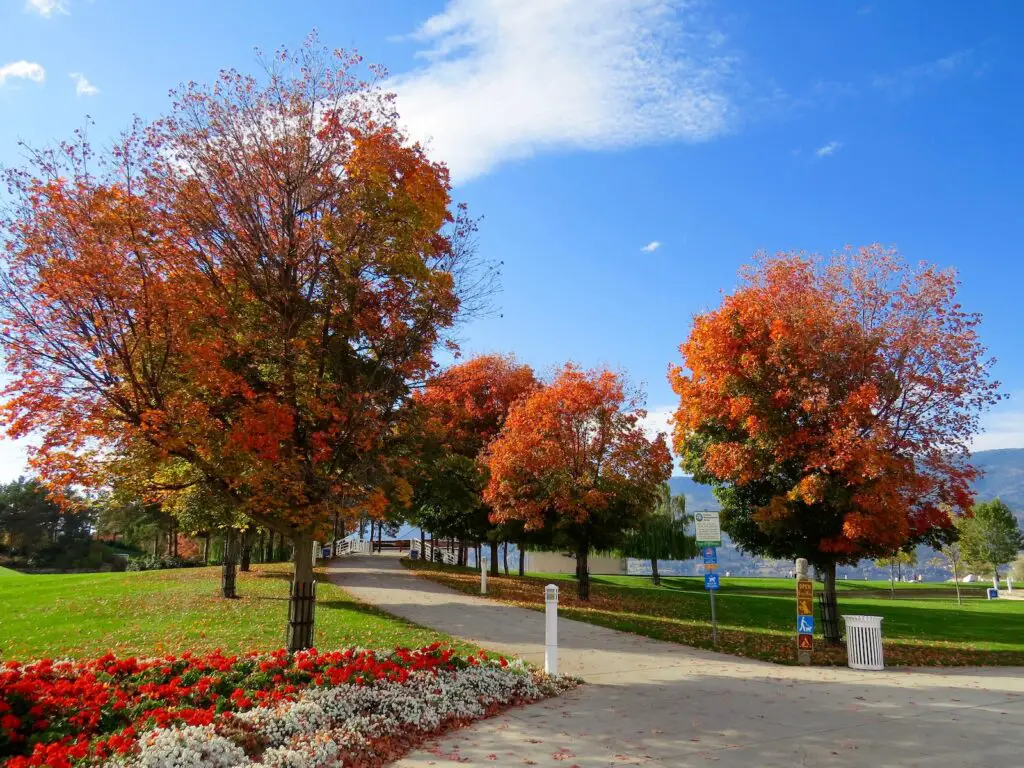
Pro: Fast Growth Rate
One of the key advantages of Autumn Blaze Maples is their rapid growth, providing homeowners with quick shade and an impressive visual impact. Understanding the growth patterns and potential sizes these trees can reach is crucial for planning and incorporating them effectively into landscaping projects.
1. Rapid Growth Statistics
Autumn Blaze Maples are known for their impressive growth rates. Within the first 5 years, they can reach a height of 5-10 feet, establishing a robust presence in the landscape. By the 15-20 year mark, these trees can attain a height of 15-25 feet and a width of 20-30 feet, showcasing their ability to transform outdoor spaces relatively quickly.
2. Desirability for Homeowners Seeking Quick Results
The fast growth of Autumn Blaze Maples makes them an ideal choice for homeowners who want to enjoy the benefits of mature trees without waiting for decades. Planting these maples strategically can provide shade, enhance privacy, and create an appealing visual focal point within a relatively short timeframe.
Pro: Adaptability to Various Climates
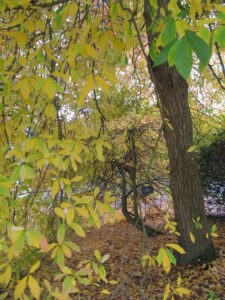
Autumn Blaze Maples exhibit remarkable adaptability, thriving in USDA hardiness zones 3 to 8. This adaptability makes them suitable for diverse climates, including regions with hot summers and cold winters. Understanding their adaptability is crucial for ensuring successful growth and longevity.
1. Range of USDA Hardiness Zones
Autumn Blaze Maples have a broad range of adaptability, covering USDA hardiness zones 3 to 8. This means they can endure a variety of climatic conditions, from the harsh winters of zone 3 to the milder winters of zone 8. This adaptability contributes to their popularity across different geographical regions.
2. Ability to Withstand Diverse Weather Conditions
These maples are known for their resilience in the face of various weather challenges. Whether it’s the heat of summer or the cold of winter, Autumn Blaze Maples have demonstrated their ability to thrive. This adaptability ensures that they can endure and flourish in a wide range of environmental conditions.
Pro: Aesthetic Appeal
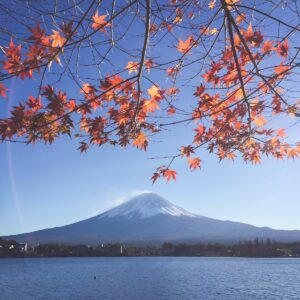
Beyond their fall foliage and growth rate, Autumn Blaze Maples are prized for their overall aesthetic appeal. Their symmetrical shape, graceful branches, and vibrant foliage make them a captivating focal point in any landscape.
1. Symmetrical Shape and Graceful Branches
Autumn Blaze Maples exhibit a symmetrical and well-defined shape, characterized by a rounded crown and gracefully arching branches. This natural form adds a sense of order and balance to the landscape, making them visually pleasing from every angle.
2. Contribution to Landscape Elegance
The overall aesthetic appeal of Autumn Blaze Maples contributes to the elegance of a landscape design. Whether planted as standalone specimens or integrated into a larger garden scheme, these maples have the power to elevate the visual allure of outdoor spaces.
Con: Structural Weakness
While Autumn Blaze Maples possess numerous positive attributes, it’s important to acknowledge potential drawbacks. One significant concern is their susceptibility to structural weakness, which can lead to branch breakage during storms or high winds.
1. Vulnerability to Weak Branch Unions
Autumn Blaze Maples are prone to weak branch unions, a condition where branches attach to the trunk with less structural integrity. This structural weakness increases the risk of branches breaking during adverse weather conditions. Regular inspection and pruning are essential to mitigate this risk and preserve the tree’s overall health.
2. Importance of Regular Pruning for Structural Integrity
To address the structural weakness associated with Autumn Blaze Maples, regular pruning is crucial. Pruning helps eliminate weak or crossing branches, promoting a stronger and more resilient tree structure. This proactive approach reduces the likelihood of branch breakage and enhances the overall safety of the tree.
Con: Susceptibility to Pests and Diseases
Like many tree species, Autumn Blaze Maples are susceptible to various pests and diseases. Understanding the common issues they may face and implementing effective monitoring and treatment strategies is essential for maintaining their health.
1. Common Pests and Diseases Affecting Autumn Blaze Maples
Autumn Blaze Maples can fall victim to pests such as aphids and scale insects. These pests can compromise the tree’s health by feeding on its sap or causing damage to the leaves. Additionally, diseases like verticillium wilt and chlorosis can pose threats, impacting the overall vitality of the tree.
2. Necessity for Monitoring and Appropriate Treatments
Regular monitoring is essential to detect early signs of pest infestations or diseases. Timely intervention with appropriate treatments, such as insecticides or fungicides, can help control the spread of these issues. Proactive care significantly contributes to the resilience of Autumn Blaze Maples against potential threats.
Con: Shallow Root System

Another consideration when planting Autumn Blaze Maples is their shallow root system. This characteristic can lead to root problems, especially in compacted or poorly drained soils. Proper planting techniques and ongoing care are imperative to prevent root damage and ensure the tree’s long-term health.
1. Discussion on Potential Root Problems
The shallow root system of Autumn Blaze Maples makes them susceptible to issues such as root compaction and poor drainage. In compacted soils, the roots may struggle to expand and establish a healthy network. This can result in diminished nutrient uptake and overall tree vigor.
2. Importance of Proper Planting Techniques and Ongoing Care
To mitigate potential root problems, it’s crucial to employ proper planting techniques. This includes planting at the right depth and ensuring adequate soil preparation. Ongoing care, such as regular watering and mulching, supports the development of a healthy root system and contributes to the tree’s overall resilience.
Con: Maintenance Requirements
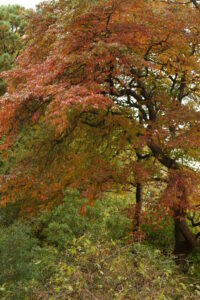
While Autumn Blaze Maples offer remarkable visual appeal and rapid growth, they do come with specific maintenance requirements. Regular pruning, fertilization, and watering are essential to ensure their continued health and longevity.
1. Need for Regular Pruning, Fertilization, and Watering
Autumn Blaze Maples benefit from regular pruning to maintain their shape and structural integrity. Pruning also helps remove dead or damaged branches, promoting overall tree health. Additionally, periodic fertilization provides essential nutrients, and consistent watering, especially during dry periods, sustains optimal growth.
2. Ensuring the Tree’s Health Through Consistent Care
Consistent care is a key factor in the success of Autumn Blaze Maples. Homeowners and landscapers should establish a routine maintenance schedule, addressing pruning, fertilization, and watering needs. This proactive approach contributes to the long-term health and vitality of the trees.
Con: Potential for Mess
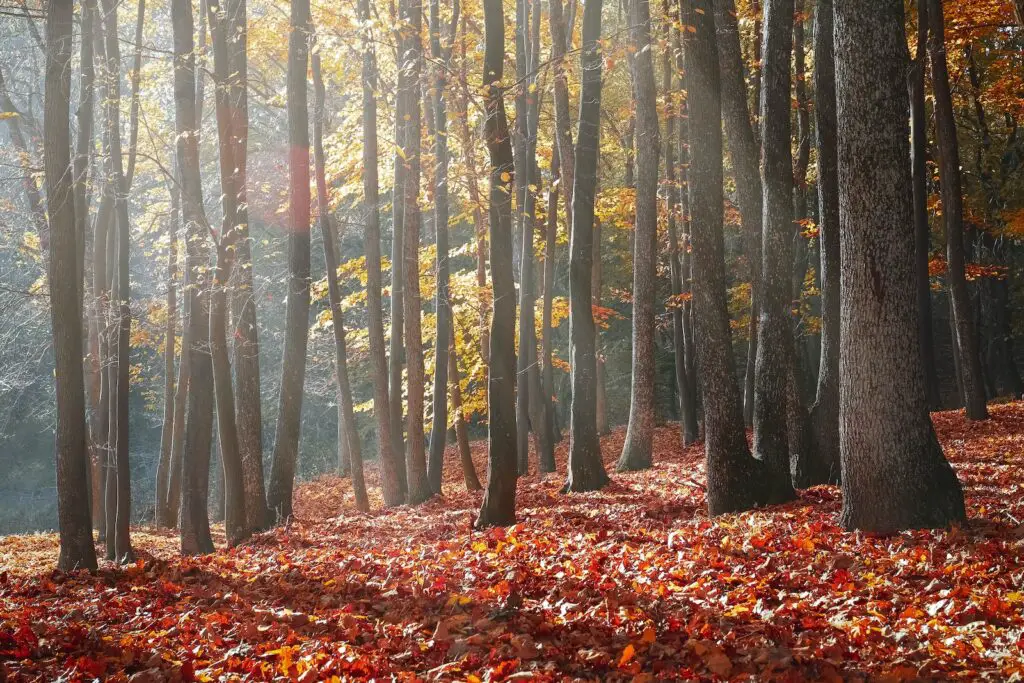
As with any deciduous tree, Autumn Blaze Maples shed a significant amount of leaves in the fall. While this natural process is part of their lifecycle, it does introduce additional cleanup efforts for those who choose to plant these trees.
1. Shedding of Leaves in the Fall
Autumn Blaze Maples are deciduous, meaning they lose their leaves in the fall. The shedding of leaves is a natural and seasonal occurrence. The vibrant display of colors during this process is one of the tree’s most celebrated features. However, it’s essential for planters to be aware of the increased yard maintenance during the fall season.
2. Additional Cleanup Efforts Required
The fallen leaves from Autumn Blaze Maples necessitate additional cleanup efforts. Raking and disposing of the leaves become part of the routine maintenance tasks in the fall. While the visual spectacle of autumn foliage is appreciated, individuals considering these maples should factor in the time and effort required for post-fall cleanup.
Frequently Asked Questions
Addressing common questions about Autumn Blaze Maples provides prospective planters with valuable insights and guidance for decision-making.
What Are the Cons of the Autumn Blaze Maple Tree?
The cons of Autumn Blaze Maples include their vulnerability to structural weakness, susceptibility to pests and diseases, a shallow root system prone to problems, specific maintenance requirements, and the potential for increased cleanup efforts due to leaf shedding.
Do Autumn Blaze Maples Have Invasive Roots?
Autumn Blaze Maples have a shallow root system, making them less invasive compared to some other tree species. However, proper planting techniques and ongoing care are crucial to prevent potential root problems.
Should I Plant an Autumn Blaze Maple?
Whether to plant an Autumn Blaze Maple depends on individual preferences, landscape goals, and the willingness to address the specific needs and challenges associated with these trees. The decision should consider factors such as desired aesthetic, available space, and commitment to maintenance.
Do Autumn Blaze Maples Get Helicopters?
Autumn Blaze Maples produce samaras, commonly referred to as helicopters due to their spinning motion as they fall. These samaras contain seeds and are a natural part of the tree’s reproductive process.
How Far Should Autumn Blaze Maple Be Planted From the House?
When planting Autumn Blaze Maples, it’s recommended to consider the potential size of the tree at maturity. A general guideline is to plant them at least 15 feet away from structures to prevent potential issues with overhanging branches.
What Are the Disadvantages of Maple Trees?
Maple trees, including Autumn Blaze Maples, may have disadvantages such as susceptibility to pests and diseases, specific maintenance requirements, and the potential for root problems. Understanding these disadvantages allows for informed decision-making.
What Is the Lifespan of an Autumn Blaze Maple Tree?
The lifespan of an Autumn Blaze Maple tree can vary but is generally around 30 to 40 years. Factors influencing lifespan include care, environmental conditions, and susceptibility to pests and diseases.
How Much Space Do You Need Between Autumn Blaze Maple Trees?
Providing adequate spacing between Autumn Blaze Maples is crucial for proper growth and development. A recommended distance is around 20 to 30 feet, considering the potential width of the mature tree.
Autumn Blaze Maple Problems
Autumn Blaze Maples may face structural weakness, susceptibility to pests and diseases, a shallow root system, and specific maintenance requirements. Regular monitoring and care are essential to address these potential issues and ensure tree health.
Autumn Blaze Maple Growth Chart
The growth chart for Autumn Blaze Maples showcases their rapid development. Within the first 5 years, they can reach 5-10 feet, and by 15-20 years, they may attain a height of 15-25 feet and a width of 20-30 feet, making them a quick and substantial addition to landscapes.
Autumn Blaze Maple Pros and Cons Texas
Considering the climate in Texas, Autumn Blaze Maples remain a popular choice. Their adaptability to diverse conditions, stunning fall foliage, and rapid growth make them suitable for Texas landscapes. However, local factors such as soil and weather variations should be considered.
Firefall Maple vs. Autumn Blaze
Comparing Firefall Maple and Autumn Blaze reveals distinctions in color, growth rate, and form. Firefall offers a compact form with intense red foliage, suitable for smaller spaces. Autumn Blaze, with rapid growth and a broader color spectrum, is ideal for larger landscapes, providing a distinct visual impact.
Autumn Blaze Maple Diseases Pictures
Visual references to diseases affecting Autumn Blaze Maples assist in identification. Common diseases include aphid infestations, scale insects, verticillium wilt, and chlorosis. Recognizing symptoms through pictures aids in prompt treatment.
Autumn Blaze Maple Growth Rate
Autumn Blaze Maples are known for their rapid growth, reaching significant heights within a short time frame. This characteristic makes them a preferred choice for those seeking quick shade and a visually impactful addition to their landscape.
Autumn Blaze Maple Planting Guide
A comprehensive planting guide for Autumn Blaze Maples ensures successful establishment. Guidelines include proper soil preparation, planting depth, and post-planting care. Following these steps enhances the tree’s chances of thriving.
Autumn Blaze Maple Roots
Understanding the root system of Autumn Blaze Maples is crucial. With a shallow root system, proper planting techniques and ongoing care are necessary to prevent potential root problems. Adequate spacing and soil considerations contribute to the tree’s long-term health.
Conclusion
In conclusion, Autumn Blaze Maples offer a dynamic combination of visual appeal, rapid growth, and adaptability. While their stunning fall foliage and fast growth rate make them popular choices, it’s crucial for potential planters to be aware of the structural weaknesses, susceptibility to pests and diseases, and specific maintenance requirements associated with these trees. Armed with this knowledge and guidance from frequently asked questions, individuals can make informed decisions when considering Autumn Blaze Maples for their landscaping projects.
Related Posts:
Hazelnut Tree Pros and Cons – 10 Facts You Need to Know
Hydrangea Tree Pros and Cons – 10 Facts You Need to Know
Zelkova Tree Pros and Cons: 7 Facts You Need to Know
Carrotwood Tree Pros and Cons: 10 Facts You Need to Know
Avocado Tree Pros and Cons: 10 Facts You Need to Know
Little Gem Magnolia Tree Pros And Cons
Autumn Blaze Maple Growth Chart – (How Tall, Fast It Grow?)
Reference
USU EXTENSION – Autumn Blaze Maple
The University of Minnesota – AUTUMN BLAZE® FREEMAN’S MAPLE – ACER x FREEMANII ‘JEFFERSRED’
